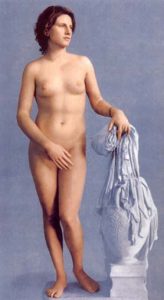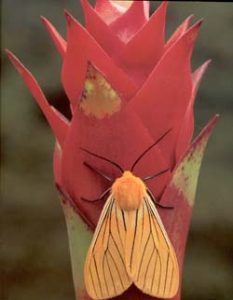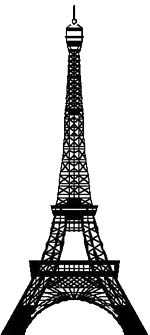sex&art 
Art includes everything people create with an ‘aesthetic’ intention, i.e. to experience and/or evoke sensations of beauty (or ugliness): decorations, drawings, sculptures, song, music and dance, architecture, literature, photography, film, tv commercials, and other things. Sports and games, debate, mathematics, clothing, science, furniture design, philosophy, in short all human activities, have more or less outspoken aesthetic aspects as well. We find beauty (or ugliness) in them.
Sex & art: plants and animals
Do plants and animals produce art? From a human perspective they certainly do. In fact, humans have always been so touched by the beauty and complexity of nature that a divine creative force has been attributed to it. This is still a frequently heard argument to support the evidence of the existence of a God-creator.
Seen from the perspective of plants and animals, it is equally possible to speak of ‘aesthetic intentions’ and thus of art. This insight has been alive among animal observers for a very long time. The thought that animals and plants make art just like we do, however, does not agree with the primitive human idea that art is a product of the human ‘mind’, that animals and plants don’t have a ‘mind’ and thus no ‘intentions’ and no ‘free will’ because they are unable to choose between ‘good’ and ‘bad’.
Sex & art: origin of art
There is a different way of looking at this. The origin of art should not be sought in a separate human ‘mind’, but in the aesthetic behaviour and appreciation that in a faraway past got programmed into our genetic make-up. And why did that happen? The explanation is simple: together with the beginning of sexual reproduction, a billion years ago, the mechanism of attraction between the sexes came into being. Unicellular beings, who only need to divide (clone) themselves in order to reproduce, don’t demand aesthetics. But flowers that need to attract bees to have their sex cells transported flirt with the help of a seductive spectrum of colors. Birds and fish, in building and decorating their nests, attract a sexual partner. Adorning feathers, powerful muscles, twitching buttocks, and innumerable other external signals of mating fever are at the root of the visual arts. Humming, tittering, whining, whistling and drumming are the origin of human music. Similar explanations can be given for the sources of all other forms of art.
Sex & art: the sexual nature of art
Often art is associated with what is ‘higher’, sex with what is ‘lower’. If we associate art with being uplifted, impressed, touched, educated, if we think of Shakespeare, Bach and Rembrandt, then a catalogue of sex articles, porno videos and tv commercials do not qualify as art, at least not Art with a capital A. Obviously there is a huge difference between great art works and cheap consumption products from the sex industry.
This comparison, however, may put us on the wrong track. For it is not the distinction between art and sex that matters, but the difference between one quality level and another. There is an endless variety between the lowest to the highest level in every kind of art, from children’s drawings to the Mona Lisa, from log cabin to cathedral, from stamping feet to ballet, and from grunting to great opera. The same is true for sexual art. Think for example of ‘The Kiss’ by Rodin (an example of sex) and compare it with a plastic Eiffel Tower, product from the tourist industry (no sex). Surely the former is greater art than the latter.
Sex & art: sexual behaviour
Yet it is difficult for most people to associate sex with what is ‘higher’. Sex, by nature is something ‘low’, ‘below’, and covered, something not express in public. Only recently has the depicting and discussing of sex become permissible on a small scale in most modern societies. In a free market economy is is not surprising that the consumption product, the ‘lower’ side of sex is more visible than the ‘higher’. Still, this is better than the complete suppression in religious or communist or otherwise dictatorial countries. But in the higher arts (especially painting and writing) the depiction and description of sex has become increasingly important as well. This has sometimes led to controversies, law suits, severe punishment for ‘immorality’ or ‘obscenity’.
Society feels ill at ease with the manifestation of sex. Public nudity is avoided and judged scrupulously. Nudity evokes lust in private spaces and deeply rooted anxiety in the public domain, in the naked person as well as in the spectator. If we do not restrict our thinking about ‘art and sexuality’ to ‘sex’, but include sexual behaviour in the widest sense (male and female, parents and children, family, marriage, falling in love, adultery and revenge), this sexual system turns out to be the most frequently recurring theme in literature, visual arts, including film and tv, music and dance. The sexual expresses itself abundantly in all our arts.
